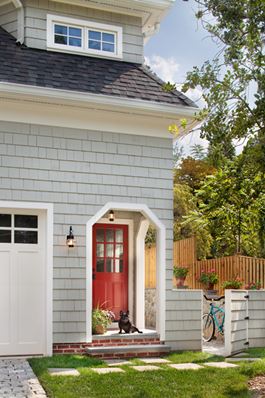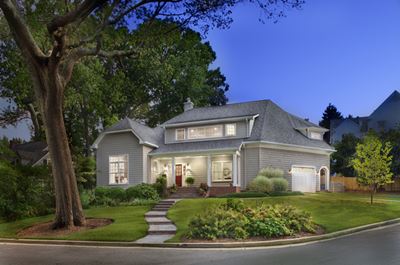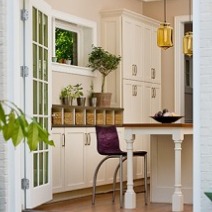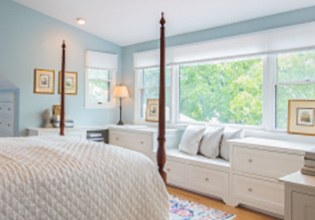How to Care for Your Period Style Home
Washington, DC historic homes are of a time and period that are difficult to replicate. With this in mind, it’s important to consider the home’s architectural, structural, and aesthetic elements when undertaking any renovation project, as many of the materials used then cannot be found today.

Not only can protecting the architectural integrity of a historic home enhance the home’s market value—but if you pass the home onto the next owner in the best possible way, you will benefit financially and the next owner will reap the rewards of living in a well cared for period style home.
If you want a detailed source regarding the preservation of your historic home, review the National Park Service guidelines: The Secretary of the Interior’s Standards for the Treatment of Historic Properties with Guidelines for Preserving, Rehabilitating, Restoring & Reconstructing Historic Buildings
For general guidelines and tips I have gathered over the course of my 30-year career, continue reading!
Protecting the Integrity of Your Historic House
In this three-part blog series, I will discuss roofing materials, gutters and downspouts, foundations, and windows and doors of period style houses.
Roofing
The roof on a home is the first line of protection against water damage from rain, snow, and sun. Water does more damage than homeowners realize, so maintaining the roof should be a priority. A good watertight roof will save you money (and headaches).
Slate
Slate was typically specified for older traditional style homes before the invention of composite roof materials and is a dominant roofing material found in many historic districts. Many freestanding, detached homes have slate roofing, which adds to a home’s aesthetic, value, and overall appearance. Historic row house facades, at a bay or tower, are often embellished with slate shingles as well.
Although expensive to install and maintain, a Vermont slate roof will last 50 years or 100 years for the thicker Buckingham slate roof. This is the true definition of added value. And if you have a slate roof, it’s imperative to keep it in good condition as long as you can—if it needs to be replaced, consider a new slate roof. I know a homeowner who passed on a kitchen remodel to replace the slate roof on her family home.
Spanish Tile (Spanish Eclectic & Mission Style Homes)
Spanish Colonial style homes were popular in Washington, DC at the turn of the last century up until around 1940. And many Spanish Colonial homes were built in the DC area during the 1920s. Red clay roofing tile was de rigueur for this style of home. Often called “straight barrel mission tile,” this roofing material is a half-round interlocking terra-cotta roof tile, convex with a curved top.
Ultimately, homes with old Spanish tile roofing will need to have the tiles removed and stored, and a new waterproofing membrane installed, and the same old roof tiles reinstalled for the next 90 years. The pleasing look of these old homes relies on the beauty of their textured and varied red color roofing. If you own a Spanish Colonial home, keeping tile roofs should be a priority in terms of protecting the architectural integrity of your home.
Standing Seam Metal & Flat Seam Metal
Standing seam tin roofing was commonly used for row houses with slightly sloped roofs that were usually not visible from the street. Many of the original standing seam metal roofs are found throughout DC in Georgetown and Capitol Hill, where they have been carefully maintained. The most expensive material for a standing seam metal roof is copper, which, when properly maintained, will outlast any homeowner’s lifetime.
Flat seam metal roofing is found on extremely low pitched roofing used on porches or bay windows. Flat seam metal roofs allow for quick rainwater runoff and require a bit more maintenance than a standing seam roof because of the soldered seams between metal panels.
Cedar Shingle & Shake
Seldom found in the Washington, DC historic districts and often not properly installed when they are, cedar shingles are usually smaller than cedar shakes and are machine cut. Shakes are larger, rustic in appearance, and look as though hand- split from a rough block of wood.
Today, many wood shingle roofs are installed over waterproofing membranes that let the shingles sit in water and rot. Cedar shingles are best used as a siding, such as on a bungalow, when appropriate for the home.
Composition, Asphalt & Fiberglass Shingle

Composition shingles are any of the various types of shingles made from a mixture of binder materials with fibers. Some varieties are called asphalt shingle and variations thereof. There are many options with composition shingles. Some resemble slate when in a gray color, or are suggestive of wood shingles when a variegated-textured brown. The higher grade composition shingles are often referred to as an “architectural-grade shingle.”
Composition shingles are a cost-effective way to keep a roof watertight for 20 to 30 years. Personal preference enters into this decision, but often the oldest homes look best with their original materials. Color and texture will become a critical issue when selecting your composition shingle—also keep in mind that shingles made from recycled products have recently come onto the market.
Torch-Down Rubber Membrane
Torch-down membranes should only be used on nearly flat row house roofs where they are not visible from street level. Torch-down roofing (sometimes call rubber roofing) lasts about 15 to 20 years, is easily punctured, and has no aesthetic value in terms of a historic house. For roofing areas that are not easily visible, however, it can be a cost-effective solution.
A professional roofer will properly install a rubber roof and avoid the hassle of what is frequently done incorrectly. For roofs that need to be walkable, there are thicker, textured, non-slip roll roofing products available. A professional roofer, builder, or architect can advise you on roofing options.
Stay tuned for parts 2 and 3, coming soon!
About Architect Bruce Wentworth
Wentworth was founded by Bruce Wentworth, AIA, a noted remodeling architect who has worked in the Washington, DC, metropolitan area for over twenty years. He has built hundreds of his own designs, ranging from modest bungalows to large-scale luxury residences.
Read the rest of Bruce’s bio.







